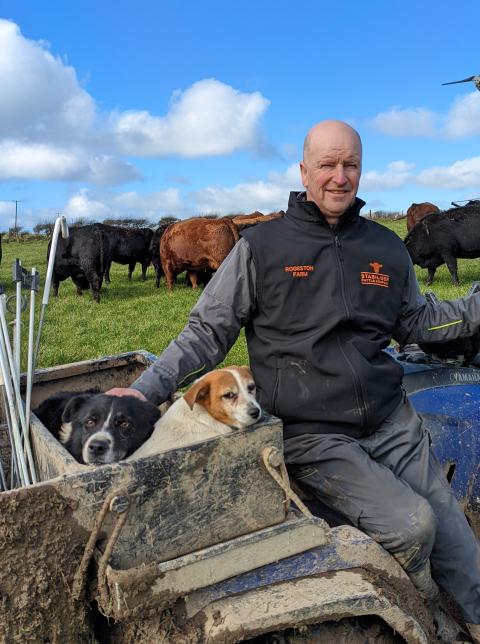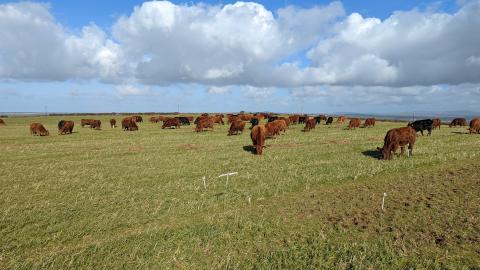Experienced farmer profile: Peter Storrow
Name: Peter & Jackie Storrow
Farm name and Location: Rogeston Farm, Portfield Gate, Haverfordwest
Sector: As a multiplier for the Stabiliser Cattle Company, we produce breeding stock from our 120 Stabiliser suckler herd.
Alongside this, the arable enterprise enables us to grow forage and cover crops for over-winter feed, whilst giving the leys a 120-day rest period. The aim being to produce enough winter forage for the cows to stay outside during the winter months.
Stocking rate (cows/ha or kgLW/ha): 2000 kg/ha average
Main soil type: Medium to light loam.
Soil fertility:
Phosphate and potash mostly 2+
Annual dose of prilled lime
Fibrophos (a phosphate-and potash-rich fertiliser) is the main P and K fertiliser applied
Nitrogen application rates at the moment - do you have plans to reduce this, and how?
92Kg N/ha.
Folia MZ28 will be used this year, along with a carbon source and liquid sulphur, as no bagged nitrogen has been purchased.
The folia nitrogen should hopefully enable the clover to fix nitrogen more efficiently.
Main pasture type (the area being measured):
1/3 long term ley
1/3 3-year ley
1/3 herbal 3-year ley
Tonnes of dry matter (tDM)/ha grown in 2021: Approx. 8.5t/ha, but is difficult to quantify due to the arable enterprise and forage crops.
Rounds of grazing achieved per paddock/year: An average of 7, plus silage taken on paddocks during the growing season.
How have you split the farm up? Number and size of paddocks? Groups are mostly on daily moves, so the size of the paddocks is determined by the size of the group and their daily demand.
Larger fields are divided into semi-permanent grazing lanes, which are then subdivided for each move.
Have you got a specific day of the week when you walk your grazing round and measure pasture growth? Monday
Why do you consider grass measuring essential to your management? Entering measurements into Agrinet on a fortnightly basis enables us to budget for the following days/ weeks ahead and manage the pastures more efficiently, allowing us to make more accurate decisions on the frequency of moves of the animals, and the most efficient use of fertilisers.
What grazing management principles do you abide by? Keeping quality at all costs, even if this involves pre-mowing occasionally during the season.
All stock taken off by early November to allow approx. 120 days’ rest
How do you deal with extreme weather conditions, such as drought or wet grazing conditions? During drought conditions, it is difficult. However, the addition of herbs, such as chicory and plantain, along with red and white clover should help this year.
One field with a more diverse multi-species ley is being trialled with a mob grazing scenario, to enable us to monitor the growth potential, hopefully, without the need of nitrogen.
Wet grazing conditions are helped by daily moves which we increase to 12 hourly moves if necessary.



